The AI ​​wave looked dazzling but there were actually only four possible landing directions:
First, breakthroughs in speech and semantics have made voice interactions finally possible.
Second, the breakthrough of computer vision led to the mixing of real space and virtual space display mode such as AR;
Third, the breakthrough in computer vision has allowed automation to be upgraded, resulting in highly automated products such as autonomous vehicles and robots;
Fourth, machine learning provides a new way of processing data. (The basic entrepreneurial model of the last way is described in the previous article: The AI ​​Entrepreneurship Brought by Two Things Google's DeepMind Just Doed)

The first three entrepreneurial models can be divided into: product lines, from soft to hard and from hard to soft. This article explores the pros and cons of these three models.
Product department
Our well-known artificial intelligence startups are basically product lines, such as domestic outbound questions, Rokid robots, foreign Jibo, Savioke, Knightscope, Meta, etc. The fundamental feature of this type of startup is to try to borrow technological breakthroughs in artificial intelligence to create new products with a new experience (with voice interaction or AR, etc.) and run out of a beautiful sales curve.
So what is a beautiful sales curve? It will probably look like this:
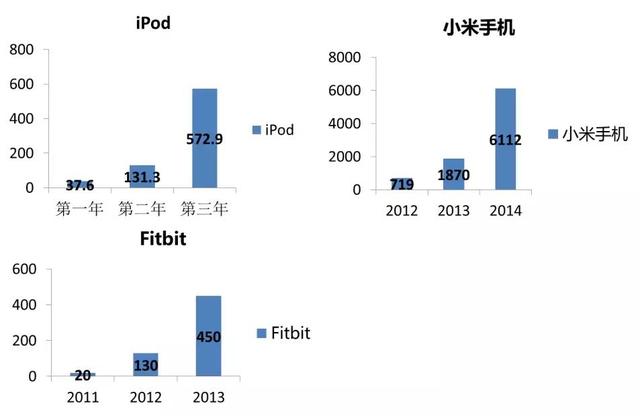
A beautiful sales curve means that once the market for new products is launched, the sales curve is multiplied (possibly higher than 2 times) over the next three years, rather than a 10% increase in annual increments.
Conversely, this means that the startup period of these startups is actually only three years. No matter how much you have done before, once you miss these three years, all the hard work may become worthless.
How long will the market really start from the early market? No one knows that the trend can be judged by logic, but the specific starting time is actually a guess. It may be 1 year, or 2 years, or even 5 years, 10 years.
As a result, there are only two key points that ai entrepreneurs in all product lines have to grasp:
Adequate preparation during a warm-up period that cannot be clearly predicted, including products, sales channels, manufacturing capabilities, etc.
2. Once the market starts, it runs out of the sales curve above.
If the first point is not done, it is Lao Luo and his hammer technology. If the second point is not done, it will be like some big companies, such as Motorola, nothing is missing but it can't be done. If both things are done, it must be a new unicorn company.
It must be emphasized here that what really matters when achieving the above two goals is the product experience rather than the advancement of technology. That is to say, this model needs more people like Jobs who can use technology instead of Sergey Brin. Technical person.
Even if all the technologies are others, as long as they don't affect the user experience, it's actually not very relevant, but in fact, because the entrepreneurs of this generation of AI are very smart and ambitious, they don't want to become purely assembly companies, so Such startups usually try to catch some key points in technology at an early stage, such as ASR. The most extreme thing is to go out and ask questions. According to various information, go out and ask the whole line to build your own ASR, NLU and even search.
This has led to a very entrepreneurial business like climbing the north slope of Mount Everest, which has become a big business, but the success is very difficult. The high risk comes from two aspects:
The duration of the warm-up period is unpredictable. Regardless of AI, a company that has been relatively successful in this model until now is Dajiang. Sales in DJI began to take off around 2013 (no official data for the time being, only Dronelife's guess data).
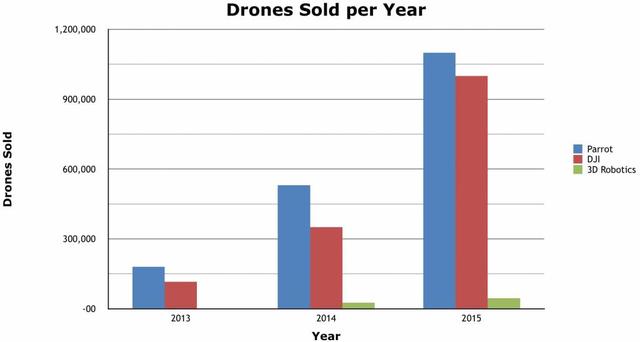
Which year was Dajiang established? In 2006, that is to say, Dajiang waited for the product to take off and waited for almost 7 years.
2. Costs have increased significantly due to the need to capture key technology points. As mentioned earlier, a new group of entrepreneurs usually do not want to be a simple assembly and sales company, so they will grasp several key technical points in the early stage. This is beneficial to the development of the enterprise after the product is started. Without the control of these points, even if it becomes a certain type of PC and mobile phone enterprise.
This is not necessarily true. After all, Amazon has acquired three companies to build its own technology system in order to do Echo. However, this will undoubtedly increase the cost and risk for the startup company, which will lead to the long-term income of the company but the high expenditure. status.
From hard to soft
Whether it is hard to soft or soft to hard, it is said that the company itself does not make products, but provides services for companies that make products. From hard to soft, the company believes that the company's advantages must start from the front end (such as the microphone array) to the back end (the cloud).
From soft to hard, the company believes that the cloud is the core of intelligence, and the front-end has a lower priority. Of course, we can say that the best ends are strong, but the startup company usually only emphasizes a certain part because of the resources and the background of the founder. These two modes can fall on the voice interaction and computer vision respectively, but because it is difficult to say clearly together, the following will take the direction of voice interaction as an example to first clear the two modes, and finally the total Analyze these two modes.
The domestic voice-interactive artificial intelligence startup company is still relatively rare in the company from hard to soft track. The most typical one should be the Wisdom Technology (this company is my portfolio, so I understand), the Wisdom technology is from the bottom. At the beginning of the acoustic array, noise suppression, reverberation cancellation, echo cancellation, etc., and then consider the above ASR, etc., contrary to the roads such as Yunzhisheng.
The advantage of this model is that it can stand at the forefront of the industrial chain and be easy to land. It is the only way for data. The data itself is the core driving force of the future ASR and even the NLU, so the stamina is quite sufficient.
The downside is that you need to use hardware to get customers in the short term, and you need to organize the production of hardware, which requires more startup funds.
It can be said that the success of a product-based startup has two external requirements: one is that the trend is coming, and the second is that the product has to withstand market testing. Companies from hard to soft also have two external requirements. One is that the trend is coming, and the other is that the technology is excellent and has a price advantage. The customers facing 2B companies are usually very rational, and many fancy marketing is not very useful.
From soft to hard
The typical entrepreneurial enterprise from soft to hard in voice interaction is Yunzhisheng. This mode selection and company positioning can be seen from the name.
The advantage from soft to hard is that it is easier to cover existing mature computing platforms. For example, all apps need their own Siri. Enterprises like Yunzhisheng need to do technical barriers and wait for Ctrip and today's headlines. . The main challenge in this direction is to compete directly with big companies such as Baidu and Xunfei. Our main focus of this article is on the landing of new hardware products, so this is no longer open.
The downside is that it is difficult to land on new hardware products (Echo, cars, robots, AR, etc.), because in order to land on new hardware products, the middle layer must be added to the array, otherwise the effect will be very poor. Once it fails to land, its technological advantages are easily broken.
The accuracy of speech recognition is data-driven, but obviously it is not hardware such as arrays. If you can't land, you can't get data without data. It's hard to get positive feedback on data, technology, precision, and scenes. It is easy to solve the problem of speech recognition accuracy in real environment.
Yun Zhisheng and others clearly recognized this, so they are also actively expanding in this direction. At this time, it is common to encounter software companies that cross-border hardware to make general problems. For example, the supply chain price may cause the same product cost to be tens of percent higher.
Route differences originate from the perception of computing architecture
The enterprise with voice semantics above has made an example, but in fact it is also true in computer vision, but the details will be different. For example, the chip of Movidus may finish the image recognition on the end, instead of the microphone array. After processing it yourself, pass the results to the cloud. The common thing behind this mode choice is the knowledge and assumptions about computing architecture.
There are three kinds of assumptions and cognitions so far:
One is to ensure that the experience (speed, etc.) always plays an important role, and the cloud is used to assist the end to complete the calculation. All the hardware products we use: mobile phones, Pads, etc. are basically this mode;
One is that calculations should mostly occur on the cloud. Google’s main push for ChromeBook is this model, and the terminal in the bank was also this model;
One is the emerging sensor + Fog compuTIng + cloud architecture. This can be seen as an extension of the first architecture. For example, all the equipment in the smart home is directly costly on the cloud. It is better to have a central processing solution that can be processed first (such as cold air conditioning). If it rains, the window will not pass to the cloud.) It is impossible to connect to the cloud.
The first two architectures often have PK in reality and cause very serious consequences. Here are two examples:
A PK happens on the PC. At that time, the meaning of the Network Computer that Oracle and other users try to do is to transfer various calculations to the back end, so that the front end becomes an input and output device. This kind of attempt is obviously unbearable, but what is interesting is that the Chromebook, which is still taking this route after the PC is mature enough in 20 years, has seen some success.
Once happened on NaTIve APP and HTML5, when Facebook was hoping to push HTML5, then Zuckerberg wanted to use Web App to break the monopoly of iOS and Anroid, but in fact Facebook almost died in this choice because of this choice. Almost let it miss the mobile Internet, the subsequent large-scale acquisition of Instagram and WhatsApp is likely to be related to the choice of this wrong route.
My personal understanding of this is: When new hardware products appear, the first thing is that the end is strong enough to maximize the experience. With the gradual development of applications, bandwidth, etc., the amount of calculation on the end may be Will move to the cloud, because there will be a cost advantage, but it takes a long process, PC has just seen this possibility for 20 years.
If this is correct, it means that on new hardware products, the first thing to set up is from hard to soft, not soft to hard.
AR, automatic driving, etc., as well as the voice interaction mentioned above, must first solve the problem on the terminal, so that the product can respond quickly and accurately in real time, ensure the user experience, and then talk about other. You can also think about this issue from another angle. On the new product, it is more likely that the iPhone will have an Android phone instead of falling over, because the iPhone gives users a stronger impact and it is easier to set up a new category, but the iPhone does not. May be made in HTML.
But the hard-to-soft model does require more complicated requirements for the founders. For example, Chen Xiaoliang of the Wisdom Technology is first an acoustic expert and a speech recognition expert, so he chooses this route from the front end and the back end. The CTO of Yunzhisheng is a computer scientist who is better at algorithms and deep learning, so it will tend to solve problems with data, neural network algorithms and greatly increased computing power (from cloud computing to HPC). It may not be easy to go to the path of attention and to cross the thinking and technical barriers.
summary
The following two things are highly certain:
1. The wave of AI is coming.
2. There must be new hardware products.
So there must be a new unicorn born from the product line.
If you think that the new hardware products must be powerfully supported to ensure the experience, and the basic order of the new products is also the first iPhone, there is Android, then it is likely that you will agree that there will be a unicorn from the hard to soft mode Appeared in it. (I have talked to many people about these points, but it is a coincidence that I have only recently encountered a beautiful woman who is investing and I know very well. I don’t say that I am copying her point of view...)
It must be emphasized that the main discussion in this article is the possible state under the new hardware products. The data analysis class is not covered by this article (data analysis is pure cloud computing), mainly for existing platforms (mobile phones, Pads). Products or services are not covered by this article.
The UFO Lithium Battery Packs include the popular sizes used in the lead-acid batteries but with the advantages of LiFePO4 technology. It maintains a ideal performance for deep cycle applications. At the heart of each UFO Bluetooth Lithium batteries is UFO PCM to take control of the battery performance and prevent the batteries from potential failure.
The Advantages of Lithium-ion Battery Pack
1.Higher energy density
The higher energy density of lithium-ion battery pack means we are going to get more power out of the same physical size cell than we could get from a lead-acid battery. So when using lithium-ion battery for electronic gear, it means more runtime but less weight.2.Less weight
Less weight could be a big advantage for most electronic applications that need to be in a compact size and lightweight for use, including mobile applications, robots, drones, floor scrubbers, RVs. A lot of power is used for those devices, so less weight would be certainly an advantage for mobile applications.3.Thousands VS hundreds of cycles
More cycles are an advantage by a lithium product we`re gonna get. You know the lithium batteries could provide thousands of cycles versus lead-acid batteries which only offer hundreds of cycles. It is a big difference in the cycling ability of lithium over lead-acid batteries.4.Charge and discharge rate
We are able to discharge a lithium product much quicker than that of a lead-acid product and get the same capacity. If the lithium-ion battery pack is discharged to 80%, you can still get a good lifespan. But doing that with a lead-acid battery will damage its lifespan. Generally, a lead-acid battery can only use fifty percent of the discharge. The recharge time is quicker on a lithium product as well especially if we have a charger that`s large enough to put the capacity back. The lithium-ion battery packs have a low self-discharge rate of only 1-2% per month.
5. Less Maintenance
When using lead-acid batteries for power supply, regular maintenance is essential to ensure the battery performance. However, when purchasing lithium-ion batteries for power use, less maintenance is required. The lithium-ion cells is more stable with good performance. It saves a lot of time for maintenance and cost for replacement.
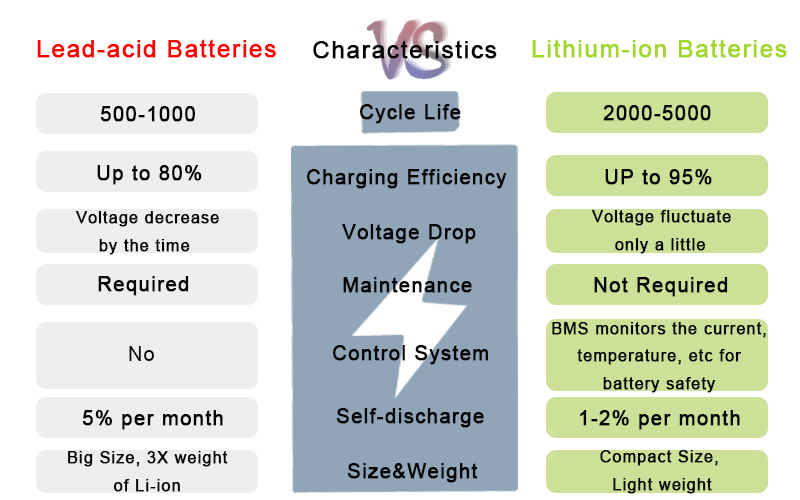
Lithium-ion battery pack Application
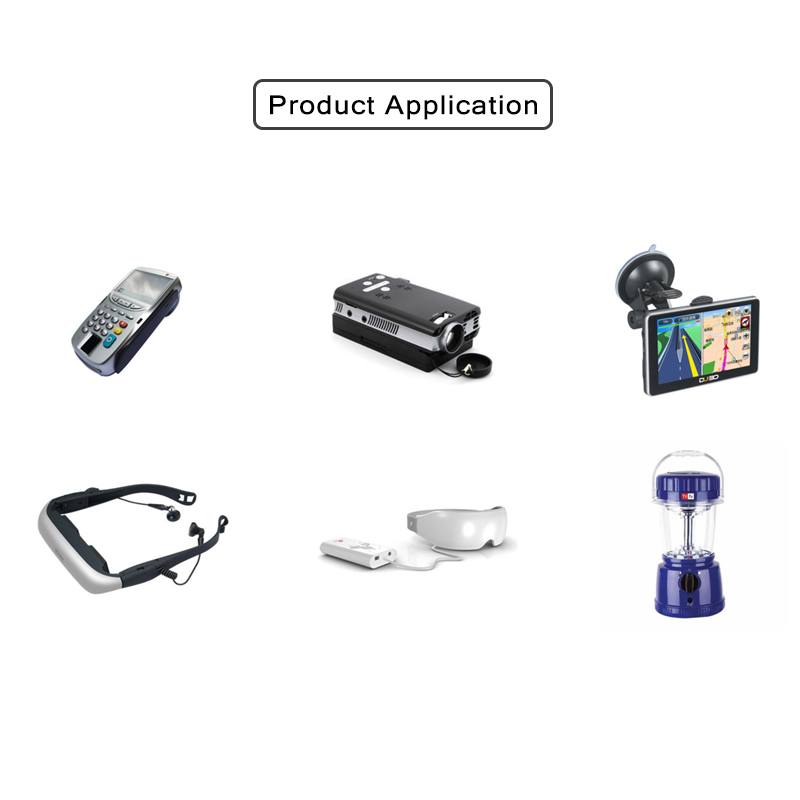
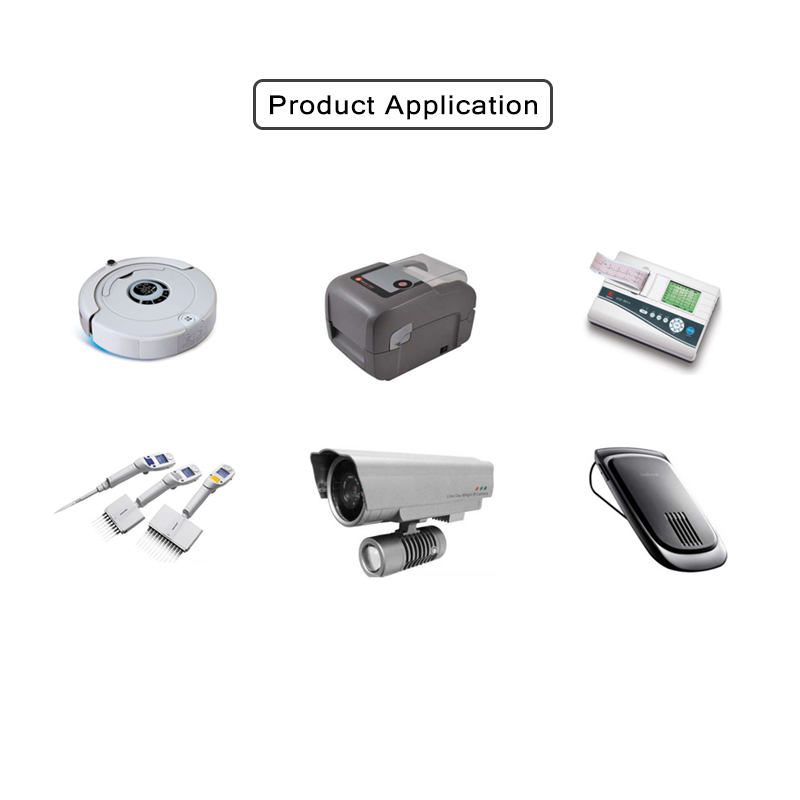
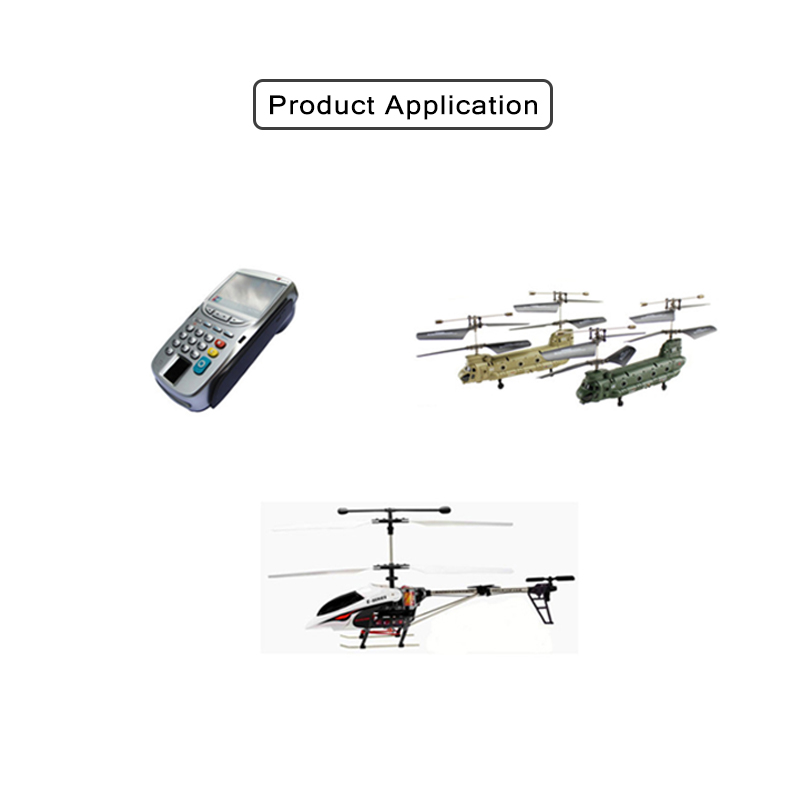
Lithium-Ion Battery Pack,Custom Lithium Ion Battery,Portable Lithium Battery Pack,Robot Equipment Battery
ShenZhen UFO Power Technology Co., Ltd. , https://www.ufobattery.com